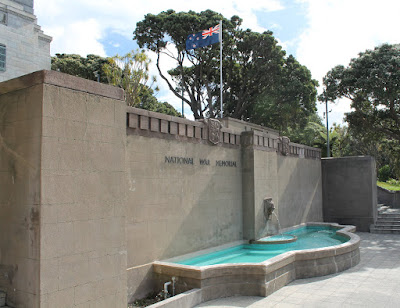"Daffodil Day, Nelson, N.Z. The procession in Bridge St."
A real photographic postcard by Nelson photographer F.N. Jones, 16 September 1916.
The Lady Liverpool Committee gratefully accepted an offer from the Nelson Horticultural Society to use its acclaimed Bulb Show as a means for setting up Daffodil Day. The proceeds of this event were used for Christmas presents for Nelson soldiers at the front.
The Nelson Evening Mail reported on this momentous local event;
"Daffodil Day.
Our Soldiers' Christmas Gifts.
Glorious Weather.
Great Crowds in the Streets.
The Daffodil Week proceedings as far as the city and Waimeas are concerned, are being concluded to-day, with Daffodil Day. Last year's Daffodil Day, held for the first time, was a great success. The proceeds were for Christmas gifts for Nelson soldiers, and this year the funds go to the same purpose. Last year's function was on a modest scale compared with the present effort, and the proceeds will amount to a very considerable sum. A Flower Queen election, in which town and country candidates competed, added greatly to the interest. The result of the election was not to be disclosed till late in the afternoon, but it is safe to say that the contest has raised several hundred pounds.
The proceedings today are being held in the most glorious weather. Certainly it was the finest day of the spring - warm sun, tempered with a gentle sea breeze. It is a coincidence that Mr D.C. Bate, the Dominion Meteorologist, was spending today in Nelson, and as he would have come in for some blame had the weather proved unfavourable, it is only fair that he should receive some credit for such a beautiful day eventuating!
From an early hour the streets were busy with stallholders getting their stalls decorated and furnished and people bringing in flowers, etc. Very effective decorations have been made at some of the stalls, and these, with strings of flags across the roadway, have given Trafalgar street a picturesque appearance. There are stalls for the sale of various cut flowers, ferns, plants and seedlings, buttonholes, sweets and produce. Great quantities of flowers have been sent in from the city, Waimeas, and Motueka side, and these were attractively arranged. Business was "good" during the morning, but the afternoon was being looked to for the busiest time..."






































